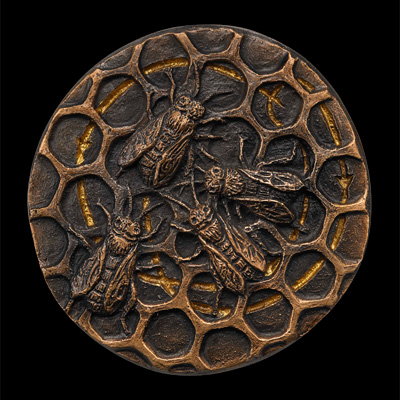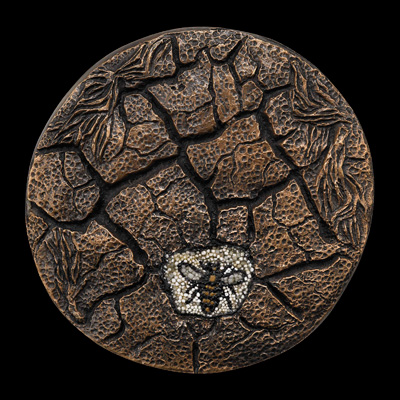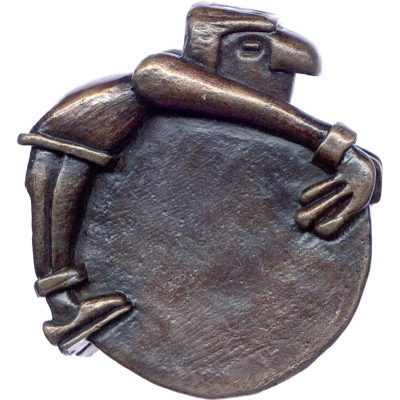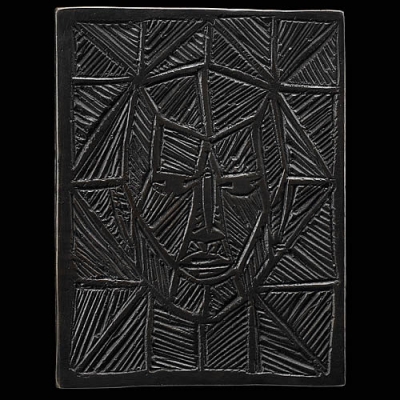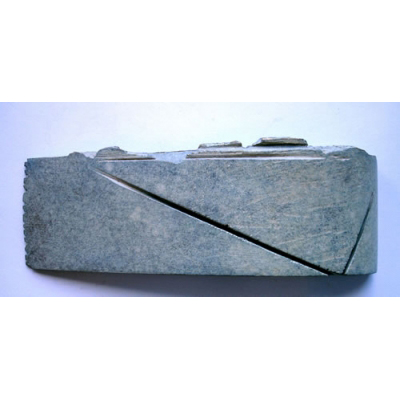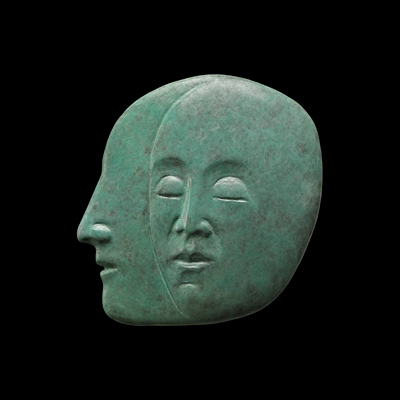Maureen O’Kane (b.1961) studied sculpture at Wolverhampton School of Art under the tutelage of Ron Dutton. After seeing a presentation of his medals, she was inspired to make her first medal, a detailed study of Grafton Street, Dublin, which was exhibited at the FIDEM congress in Florence in 1983. With Dutton’s encouragement, she produced several medals for her degree show. After her studies, O’Kane spent three years in Europe and Egypt, developing an interest in public art and making a living as a pavement artist. In 1989 she settled in Cardiff, where she has worked for the last twenty-five years in public and community arts, specialising in site-specific mosaic. O’Kane has worked on a number of public art mosaics further afield, including the Sagrada Familia in Barcelona. She also made a short animation film on the theme of classic ‘Asaroton’ Roman mosaics, a style of mosaic depicting the detritus from a Roman feast. This film, The Unswept Floor, won a number of international awards and a Welsh Bafta. During the intervening years, O’Kane has retained her interest in medals and often includes small relief pieces in her mosaic works. In 2011 she reconnected with the medal world at the BAMS conference in Falmouth, and in 2014 she attended a master class in Rome to learn the technique of micro-mosaic with the express intention of using this to add an element of texture and colour to bronze medals.
About Round Dance (Honey Bee), she writes: ‘This medal for BAMS concerns the risks to the honey bee – and ultimately to our planet – resulting from the over-use of pesticides such as neonicotinoids. In 2013 the EU banned the use of three neonicotinoids on flowering crops for two years due to the risk they posed to bees. The UK government opposed the EU ban. These pesticides are suspected of causing honeybees to lose their orientation, as often bees are found dead some distance from their hives, unable to find their way home. The obverse of the medal shows the Round Dance, which is a specific communication behaviour of honeybees inside the hive. When a forager returns to the hive, she performs this dance to communicate the location of the food source close to the colony. Bees and other pollinators are vital for many food crops. Thus the reverse of the medal depicts the devastating consequence of a world without bees, showing an uncovered micro-mosaic of a bee in the dry, barren earth.This further develops the theme explored in The Unswept Floor, highlighting the value of the depiction of discarded items and life forms as insight into the past and lessons for the future.’
